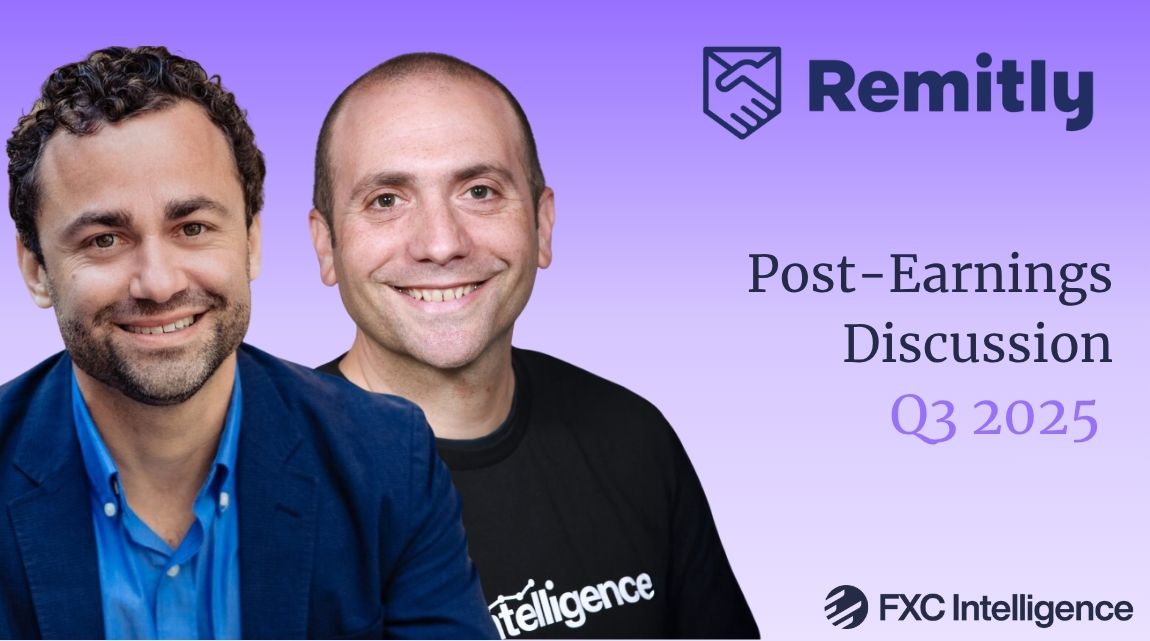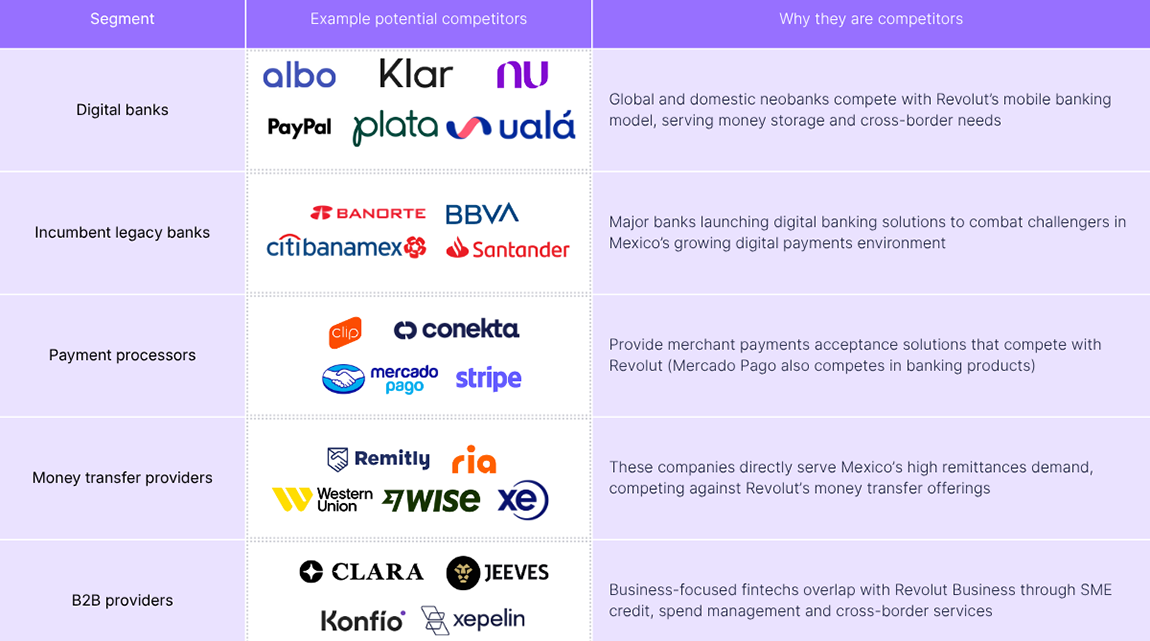Remitly has continued its strong run of success, with Q1 2025 surpassing its previous projections. We speak to CEO Matt Oppenheimer to discuss growth drivers and how the company is evolving and diversifying its customer base.


Remitly has reported another strong quarter, in which it beat its previous projections for Q1 2025, while also posting its best quarterly results in terms of profit to date. This has been aided by both increased efficiencies and greater customer numbers, but it is also being supported by an ongoing diversification in the types of customers the business is reaching.
From micro businesses to high-value senders to WhatsApp users, Remitly has taken a variety of steps to broaden its reach, which is translating into a range of positive results.
We caught up with CEO Matt Oppenheimer to explore how the company was approaching this customer evolution strategy.
Topics covered:
- Remitly’s evolving growth drivers
- Growth in higher send value money transfers
- Targeting micro business customers
- Integrating Remitly with WhatsApp
- Inside Remitly’s innovation sandbox Circle
- Driving marketing efficiencies
- Macroeconomic conditions and remittance resilience
Remitly’s evolving growth drivers
Daniel Webber:
A very strong call – the numbers keep going up above your projection range and above the rate of the market. What are some of the new facets that are driving this strong growth?
Matt Oppenheimer:
First off, thanks for having me, as always, and thanks for all the research and insights you do for the industry. It’s always something that our team and myself really enjoy reading.
I appreciate the congratulations. We’re really, really proud of the results. 34% year-on-year growth to $361.6m in revenue, $60.2bn in send volume, which was up 41% year-on-year. So, as you said, certainly growing faster than the overall market.
On the unique things, it’s a continuation of a macro trend that is shifting from offline players to digital players, and within the digital players, us having more scale and size gives us that flywheel that we talked about in the past that enables us to drive lower costs, better pricing, better customer experience.
You just see that flywheel spinning on a global basis now to where we’re serving over eight million quarterly active users in Q1. And, as we often say, we’re just getting started.
Remitly surpasses expectations in Q1 2025
With Q1 2025 revenue growth of 34% YoY to $362m, Remitly shot past its previously projected range of $345m-349m. Its adjusted EBITDA also exceeded projections, growing 157% YoY to $58.4m, compared to its projected range of $36m-40m.
This has resulted in Remitly’s highest ever quarterly adjusted EBITDA margin, at 16%.

The company also saw its first quarter with net income in the double-digit millions, at $11.4m, with Remitly reporting positive income for the third quarter running, after previously posting consistent net losses.

In response to the results, Remitly has increased its FY projections from $1.57bn-$1.58bn to $1.57bn-$1.59bn. Its adjusted EBITDA projections have also risen from $180m-200m to $195m-210m. However, the company has warned that it is lapping tougher comparisons in H2 due to outperformance last year.
Remitly is projecting Q2 25 revenue of $383m-385m, although it expects a lower EBITDA margin of around 12%, as well as a net loss, having warned that this is likely to remain volatile from quarter-to-quarter.

Growth in higher send value money transfers
Daniel Webber:
You’ve reported an increase in send volume with higher send values. What’s going on there? Is it higher send from the core customer, or breaking into some of these higher send value customer segments that we’ve discussed before?
Matt Oppenheimer:
We are excited about the fact that we continue to unlock new segments of customers, new geographies, and are diversifying in that way.
As part of that, with high dollar senders, we’ve done things like improve the sophistication of how we do a tier limit or a total amount transfer increases for customers. That is not only more effective from a risk standpoint because it’s leveraging a lot of data and machine learning and other modeling, but it’s also a better customer experience for customers to be able to send the amount that they need to send more seamlessly.
That enables us to serve corridors that we’re already in and have been in for a long time that have high dollar senders like US-India, as an example, but also enables us to unlock new corridors that have a high percentage of customers that are sending larger dollar amounts. That’s part of why send volume grew faster than revenue, in addition to continued strong retention, continued love for our product and all the other things that you can expect.
Growing send volumes amid diversified customer base
Remitly also saw its send volumes grow by 41% to $16.2bn in Q1 2025, while active customers increased by 29% to eight million.
The company has attributed this to in part to increased customer engagement, which is aided by increased pay-in and pay-out options through direct integrations with local payment partners, such as Orange Money in Mali and Burkina Faso, Vodafone Cash in Egypt and PLIN in Peru.
The company’s integration of WhatsApp is also enabling it to reach new customers, particularly those transitioning from sending remittances offline to online.
However, its increased focus on higher send value customers is also playing a role, with this segment seeing growth outpacing overall send volume. Transactions over $1,000 saw 45% YoY growth in send volumes, while Remitly saw the largest transfer in the company’s history in Q1.
This has been aided partly by direct integrations, but also by the use of machine learning models to tailor send limits by customer depending on their individual risk profile, rather than Remitly’s past approach of blanket send limits.

Growth in send volume has in particular driven up the average send volume per customer by 9% YoY, to reach $2,025 in Q1 2025.
The company is also seeing early traction with micro business customers who naturally have higher average send amounts.

Such increases have also helped to drive up Remitly’s average revenue per customer, which grew 4% YoY to $45.20.
The company also reports improvements in key trust and performance-related metrics, with 93% of transactions disbursed in under an hour and over 95% completed without customer support contact, both new records for Remitly.

Targeting micro business customers
Daniel Webber:
Talk us through some of the traction you are seeing with what you’re calling micro business customers. What is a micro business customer to you and how are you seeing them beginning to use your products?
Matt Oppenheimer:
Interestingly, this was born out of the observation and insight that a lot of micro businesses, which I’ll define in a second, were coming to our platform and trying to use our product already without even us marketing or reaching out to those customers.
As an example, I’ve talked about a customer named Mary in the past who is from the Philippines and moved to the US 20-plus years ago. She’s an accountant. She provides outsourced bookkeeping services to other businesses in the US. And she has just over, I think, 10 contractors back in the Philippines that she needs to pay to help her with that outsourced bookkeeping.
We focused on micro businesses because she doesn’t need a lot of the bells and whistles that even small and medium-sized businesses need, that other companies serve well.
But this micro-business segment is in a lot of ways similar to an individual sending money back home. And because we have such a seamless experience for individuals to send money back home and a cost to serve those customers, we don’t have big sales teams, we don’t have some of the other costs that come with the bells and whistles that small and medium-sized businesses need.
We believe there’s a unique opportunity for us to serve those micro businesses. The main thing we’ve done in our product is instead of Mary having to call our customer support and go through a manual process of KYB – know your business – we’re productising the experience both on the frontend and then, of equal importance, on the backend, in terms of the amount of work that needs to be done to go through a KYB process for a variety of types of small businesses, nonprofits, etc.
I’m excited about that. It’s born out of the fact that customers are already trying to use our platform for that, we’re just making it easier for them to do so.
Integrating Remitly with WhatsApp
Daniel Webber:
You recently announced an integration with your AI virtual assistant and WhatsApp, where some other players in the market have already seen some good traction. How do you think WhatsApp and your Remitly offering come together?
Matt Oppenheimer:
Our business, as we’ve talked about, comes down to trust. It’s in our vision: transform lives with trusted financial services that transcend borders. Building that trust is often the hardest element. Once it’s built, there’s nice, strong, repeat retention, given the strength of our product.
When I think about WhatsApp, first and foremost, I think about the fact that there are billions of users around the planet that are already using WhatsApp to communicate with their families back home across that platform. That’s point one.
Point two is, we can uniquely build a really good experience within WhatsApp because we have built out a virtual agent that we’re using from a customer support standpoint that is good and getting better every day. I’m really excited about the CSAT [customer satisfaction] scores for that product. I’m excited about the usage. I’m excited about the new use cases.
Being able to plug that virtual AI agent that we already have built into the WhatsApp platform is something we uniquely can do, given that we’ve built that out. And specifically, I think that we can use WhatsApp as a way to earn and build trust with customers that are not yet users of Remitly and engage them in the WhatsApp platform to then be able to onboard and build that trust with Remitly.
Then, of course, there’s other benefits that we can do in terms of offering customer support and doing other things within the WhatsApp experience, leveraging our virtual agent. But the area that I’m most excited about is how we leverage that platform to meet customers where they’re at, billions of customers around the globe, and build trust with new customers.
Just like when you and I use any app, but especially a financial services company, it’s a different level of commitment or effort to download an app, to go through that experience, than it is to go through some easy steps of, “Hey, let me start conversing with a virtual agent within the WhatsApp platform to really get to know that product and experience”. That’s the idea with the WhatsApp product that we’ve built and I’m excited about the opportunity there.
Inside Remitly’s innovation sandbox Circle
Daniel Webber:
You mentioned Remitly Circle on the call, which is your sandbox for innovation. Talk me through what the product is and how you are approaching development with it.
Matt Oppenheimer:
What we were excited about during our earnings call was really talking about the broader ways that we’re accomplishing our vision, which, again, is to transform lives with trusted financial services that transcend borders.
Part of that is I think being able to talk about the number of new use cases and new types of customers, whether it’s high-dollar senders, whether it’s seafarers, micro businesses. That’s a whole opportunity.
Then part of it is how do we look at our existing customers and add more value-added services to those existing customers? As I mentioned in the script, we continue to innovate and explore adjacencies for customers to be able to store funds, to access faster cross-border payments. We’ve used Circle as a sandbox for that, for creating additional liquidity in unique ways.
That approach has enabled us, without disrupting anything in the core flow, to move quickly, to learn really deeply before scaling new capabilities across our broader customer base. We’re excited about what’s to come there and I’ve never been more excited about our opportunity to accomplish the vision that I mentioned, including adding value-added services to our existing customers.
Remitly reports efficiency and operational gains
While Remitly has in the past seen some expenses climb, particularly those related to marketing, this quarter saw the company report efficiency and operational gains across several metrics.
Revenue less transaction expense grew in line with revenue overall at 34% YoY, with the company seeing particular improvements in transaction expenses when excluding provision for transaction losses.
The company also reported ongoing improvements in economics as a result of increasing volumes, with particular benefits from increases in transactions where the recipient received the remittance digitally, rather than in cash, which saw more than a 300 basis point improvement YoY.
Marketing spend, meanwhile, did increase 7.8% YoY, however it has seen a 473 basis point YoY improvement to account for 18.9% of revenue on a non-GAAP basis versus 23.6% last year, aided in part by increased use of AI tools to support marketing efficiency. Marketing spend per quarterly active customer also decreased by -17% YoY to $8.50 in Q1 2025.
AI continues to also help drive improvements in customer support and operations, alongside product improvements, helping drive an 89 basis point improvement in this area to account for 6.2% of revenue (against 7.1% in Q1 24).

Driving marketing efficiencies
Daniel Webber:
Although you spend a lot on marketing, you’re driving continued efficiencies. Talk us through how you’re approaching that and how it’s gaining as you scale.
Matt Oppenheimer:
A big part of that is word of mouth. If you look at our iOS and Android App Store ratings, you look at our Trustpilot scores, customers really appreciate the reliability and trustworthiness of our product. So you take that, you multiply it by the eight million quarterly active users, and that number would be even larger if you looked at annual actives, because different customers send at different times of the year.
That’s part of when we talk about the flywheel, that word of mouth helps because then for each incremental marketing dollar that we’re spending, it’s improved in aggregate by the fact that there’s a lot of customers that are saying, “Hey, you’ve got to try out Remitly. I trust it. It’s a great experience”. That’s a lot of why our marketing is getting even more efficient.
Macroeconomic conditions and remittance resilience
Daniel Webber:
Let’s talk about the macro environment, which you addressed in the earnings call. How do you see the remittance business in this broader tariff-led environment?
Matt Oppenheimer:
I’m very happy to talk about it. It’s on investors’ minds and it’s on our minds. When you look at, first, the tariff impacts, we’re fortunate in the fact that there’s no direct impact from tariffs in the sense that our variable costs don’t include buying goods that are made and produced overseas, given that we’re money transmitters. That’s foundational. It gives me a lot of optimism and gratitude for our specific business.
Second, when you think about just broader immigration, macroeconomic policies, I’ll start with remittances and then I’ll talk a little bit about Remitly specifically. Remittances over the last decade of building this business, 14 years, and looking at the broader arc of studies on remittances, they’re remarkably resilient.
That’s full stop thanks to our customers and their resilience, but it’s also the fact that it’s a non-discretionary purchase, so it’s not the first thing that customers will cut because even in a macroeconomic environment that’s challenging, or actually I’d say especially in a macroeconomic environment that’s challenging, our customers’ money matters even more to their loved ones back home.
Third is specific to Remitly. I’m really grateful that our business is diversified. You look now and greater than 34% of our revenue is coming from outside the US. That’s up from just 25% four years ago.
I’m grateful for the diversification. I’m grateful for the profile of customers we serve because of the fact that our customers link their bank account or their debit card to our platform in order to send money, which signals that they’ve been in the country longer, that they have a more established presence because they’ve gone through KYC at their financial institution and then they go through KYC with us separately. So that segment is more stable and more predictable than potentially other cash-based segments.
Fourth, it’s just a huge market. Folks lose sight of that at times, but we’re 3% of $2tn that’s sent every year. So, overall, I think 2025 is going to be a big year for us, and I’m confident and optimistic about the future.
Daniel Webber:
Is there anything else you would like to cover?
Matt Oppenheimer:
You know me, I’ll always end with the customer story and I’ll say two things broadly. One is that remittances always matter, but they matter most when times are hard. So I’m inspired and grateful for our customers broadly.
But I’ll take the customer story in a slightly different direction. I was at a conference earlier this week and I started talking with somebody who has about 20 employees that she pays with her business in the Philippines, India, abroad.
She was just telling me how there are no good solutions for her to be able to do that. She talked about the different competitors that I won’t mention, but she’s switched from. And she was like, “Is there a way that Remitly can serve us? Because in today’s world, that’s a big need. I have it, others have it.”
The first thing I did when I got back was connect her with our product team on the micro business side, so we can learn and serve her. But I think it’s a great example of how the platform we’ve built does have the extensibility now to be able to serve a wider set of customers. It’s early, early days there, but I’m excited about the potential.
Daniel Webber:
Matt, thank you.
Matt Oppenheimer:
Thank you.
The information provided in this report is for informational purposes only, and does not constitute an offer or solicitation to sell shares or securities. None of the information presented is intended to form the basis for any investment decision, and no specific recommendations are intended. Accordingly, this work and its contents do not constitute investment advice or counsel or solicitation for investment in any security. This report and its contents should not form the basis of, or be relied on in any connection with, any contract or commitment whatsoever. FXC Group Inc. and subsidiaries including FXC Intelligence Ltd expressly disclaims any and all responsibility for any direct or consequential loss or damage of any kind whatsoever arising directly or indirectly from: (i) reliance on any information contained in this report, (ii) any error, omission or inaccuracy in any such information or (iii) any action resulting there from. This report and the data included in this report may not be used for any commercial purpose, used for comparisons by any business in the money transfer or payments space or distributed or sold to any other third parties without the expressed written permission or license granted directly by FXC Intelligence Ltd.



